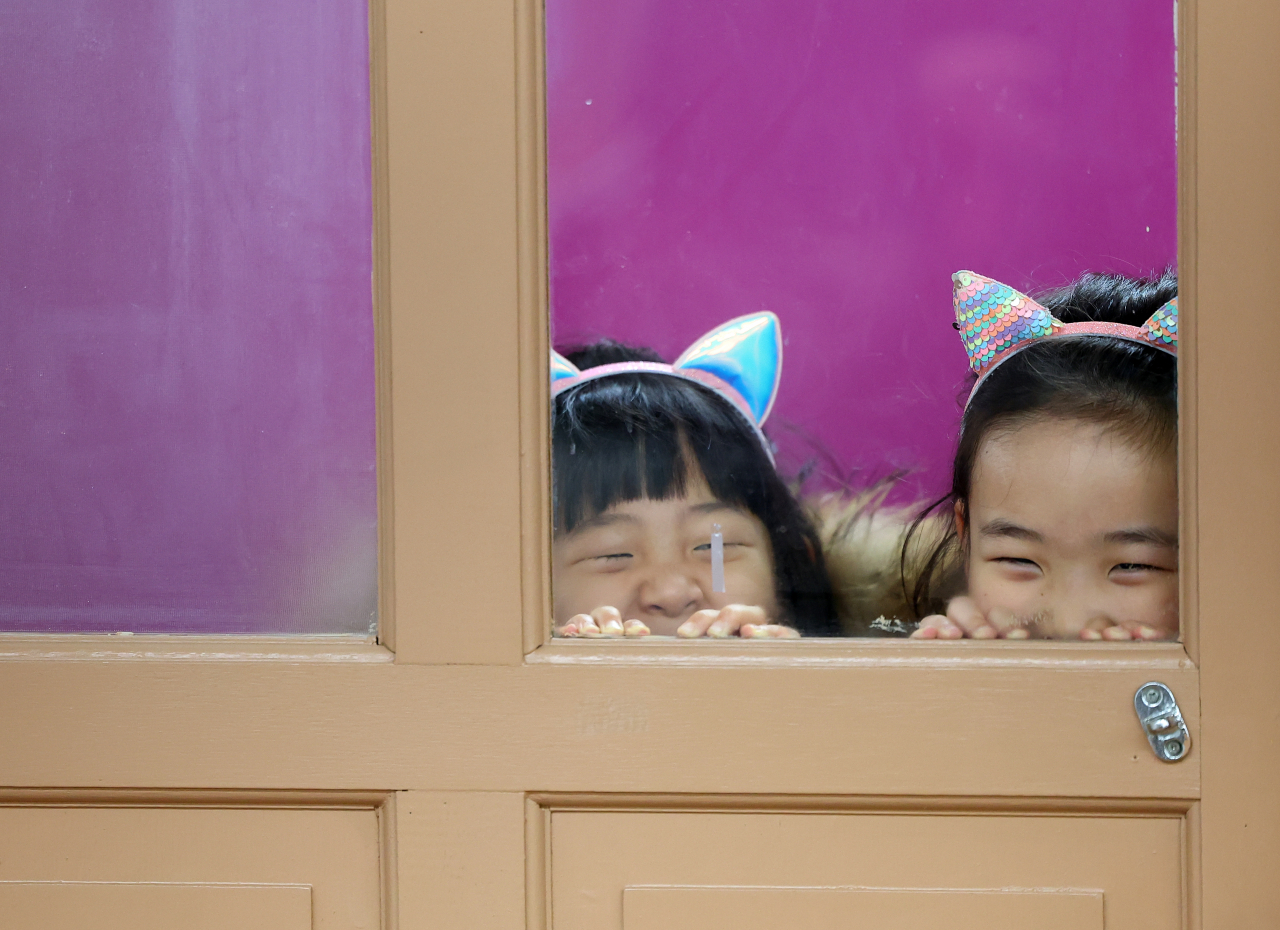Record-low 1st grade enrollment expected amid waning fertility rates
Number of 1st graders in Seoul plunges into 50,000s
By Choi Jeong-yoonPublished : Jan. 3, 2024 - 15:07

South Korea is expecting to see record-low numbers of first graders entering elementary school this year due to knock-on effects from the country's falling birth rate.
The number of children eligible for enrolling in elementary school nationwide in March was 413,056 as of December, according to the Ministry of Education and the Ministry of Public Administration and Security on Wednesday.
However, only around 90 percent of eligible children are actually expected to enroll in elementary school in March, excluding those who defer enrollment due to health issues or moving abroad, among other reasons. The government therefore expects the actual number of new first graders this year to be in the mid-to-high 300,000s.
In Seoul, where public elementary schools are holding orientations for soon-to-be first graders on Thursday and Friday, the number of children eligible to attend school plunged 10.3 percent on year to 59,492 across state, public, and private elementary schools.
After reaching 78,118 in 2019, the number of children enrolled in elementary schools in the capital continued to decline, reaching the 60,000 mark for the first time last year at 66,324, and then dropping into the 50,000-range this year.
This is a sharp drop from the 70,000 threshold to the 50,000s in just two years.
With the number of soon-to-be first graders decreasing, the number of students per classroom has dropped. According to the Seoul Metropolitan Office of Education, an average of 21.4 students were assigned to each classroom, which is expected to decline to 20.2 by 2028.
The number of small-size schools, which have fewer than 240 students, is forecast to increase from 51, accounting for 9 percent of all elementary schools in Seoul, to 85 in 2027 (14 percent).
The country's birth rate reached a new low of 0.78 in 2022. If it is not addressed with appropriate policy responses, there is a probability that Korea's growth rate will plunge below zero percent by 2050, with the total population falling below 40 million by 2070, according to the Bank of Korea's Economic Research Institute. The typical replacement birth rate for a steady population is 2.1.
"With this speed of decline in the number of students, there will be more small-sized schools, making mergers and close-downs of schools inevitable. This will cause an immense problem for educational rights among students in and outside of Seoul," an education official said, calling for urgent measures to tackle the population issue.
-
Articles by Choi Jeong-yoon




![[Music in drama] Rekindle a love that slipped through your fingers](http://res.heraldm.com/phpwas/restmb_idxmake.php?idx=644&simg=/content/image/2024/05/01/20240501050484_0.jpg&u=20240501151646)

![[New faces of Assembly] Architect behind ‘audacious initiative’ believes in denuclearized North Korea](http://res.heraldm.com/phpwas/restmb_idxmake.php?idx=644&simg=/content/image/2024/05/01/20240501050627_0.jpg&u=20240502093000)



![[KH Explains] Will alternative trading platform shake up Korean stock market?](http://res.heraldm.com/phpwas/restmb_idxmake.php?idx=644&simg=/content/image/2024/05/01/20240501050557_0.jpg&u=20240501161906)








![[Today’s K-pop] Stray Kids go gold in US with ‘Maniac’](http://res.heraldm.com/phpwas/restmb_idxmake.php?idx=642&simg=/content/image/2024/05/02/20240502050771_0.jpg&u=)